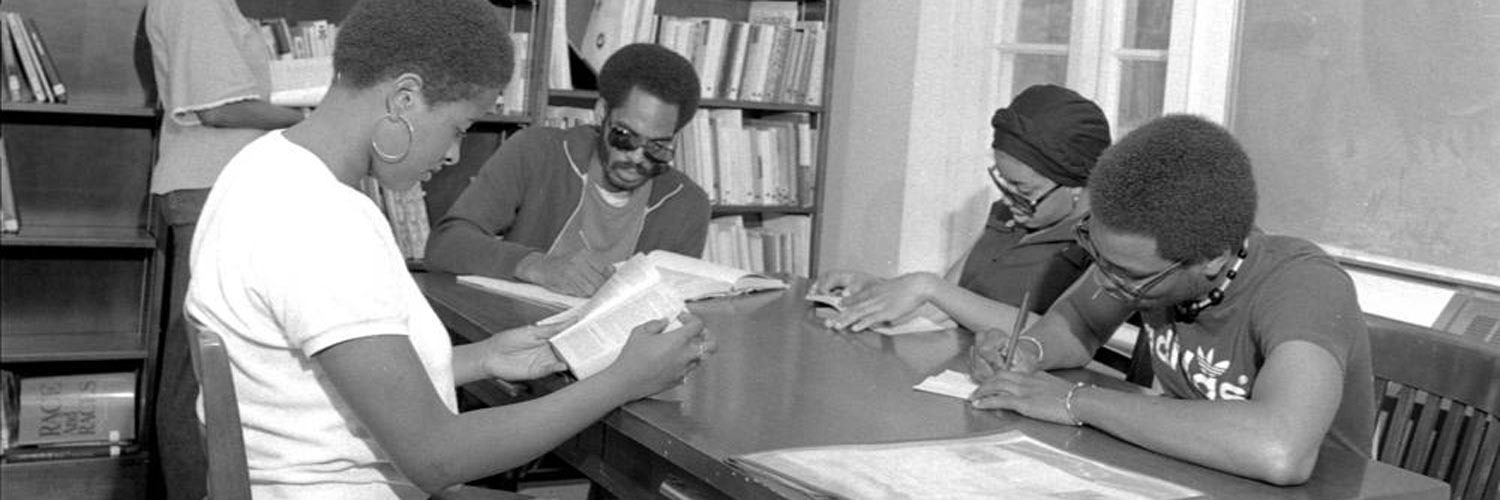Our program was one of the very first to represent a long-needed increase of academic interest in Black lives, history, and culture. From the beginning, our commitment has been to provide access to higher education to students of color and others with an interest in African diaspora issues.
History
1960's
Our field emerges within a national social movement
African American students organized on campus in the spring of 1968, demanding more representation: an increase in Black faculty, admission of more Black students, and the introduction of a program in Black Studies. IU President Joseph Sutton responded by asking them to develop a document to spell out their goals. By 1969, that document went before the Faculty Council, where it was considered and approved.1970
Afro-American Studies begins at IU
Only two years after the groundbreaking first program in Black Studies began at San Francisco State University in 1968, Herman C. Hudson founded and chaired the first version of our department at Indiana University Bloomington, known at the time as Afro-American Studies. Hudson then became vice chancellor for Afro-American affairs. Hudson created the first version of what is now the Neal-Marshall Black Culture Center, then known as Black House. It focused on supporting the teaching, research, and service missions of the university, while also providing a positive and hospitable social environment for African American and African students, faculty, and staff.1971
Creation of the IU Soul Revue
1972
The Black Culture Center
In 1972, Black House was relocated to a former fraternity house on campus and was renamed the Black Culture Center.1991
The Archives of African American Music and Culture
The AAAMC was established, providing a repository of materials covering a range of African American musical idioms and cultural expressions from the post-World War II era. The Black Culture Center became known as the African American Cultural Center. Soon thereafter, plans were made to construct a new facility for the center on North Jordan Avenue.2001
A new building on North Jordan Avenue
After years of effort by many IU student leaders, administrators, and alumni, funding was received and a new 97,000 square foot building was constructed for the African-American Culture Center and its affiliates, as well as for the Department of Theatre and Drama. The center moved to its current location. In a 2001 interview, Herman Hudson said the center was one of his proudest accomplishments. “Besides being a building, (it) is a symbolic structure indicating that Blacks are part of this institution, and a kind of home away from home for them to conduct both academic and social activities.”
2002: Dedication of the Neal-Marshall Black Culture Center
In January 2002, the Neal–Marshall Black Culture Center was dedicated in honor of Indiana University’s first African American male and female graduates: Marcellus Neal, who earned a Bachelor of Arts degree in 1895, and Frances Marshall, who received a Bachelor of Arts degree in 1919. The Neal-Marshall Black Culture Center serves as a bridge connecting Indiana University to programs and services that promote knowledge and awareness of the black experience in the United States and throughout the world.
2008
The AAADS doctoral degree program
The AAADS doctoral degree program was established at a time when only three other public universities and seven universities in the United States offered doctoral degrees related to African American studies. The program at IU Bloomington was the first to focus specifically on the mostly involuntary dimensions of the African diaspora, establishing an international studies component within the degree and stressing the interdisciplinary aspects of its program.
2017
Our AAADS department is still one of the nation’s premier programs in the field
The AAADS department remains distinguished as one of the nation’s premier programs in the field, connecting students and faculty across campus and beyond. We find relevance in the contemporary historical moment, contributing to conversations, commentary, and research on race, history, and the future.
…shared experiences, among them slavery, emancipation, imperialism, decolonialization and racism, warrant close attention and mark this field as a discrete unit of study that bears directly and powerfully on world history, literature and politics.
From the proposal for the AAADS Ph.D. degree program

 The College of Arts
The College of Arts